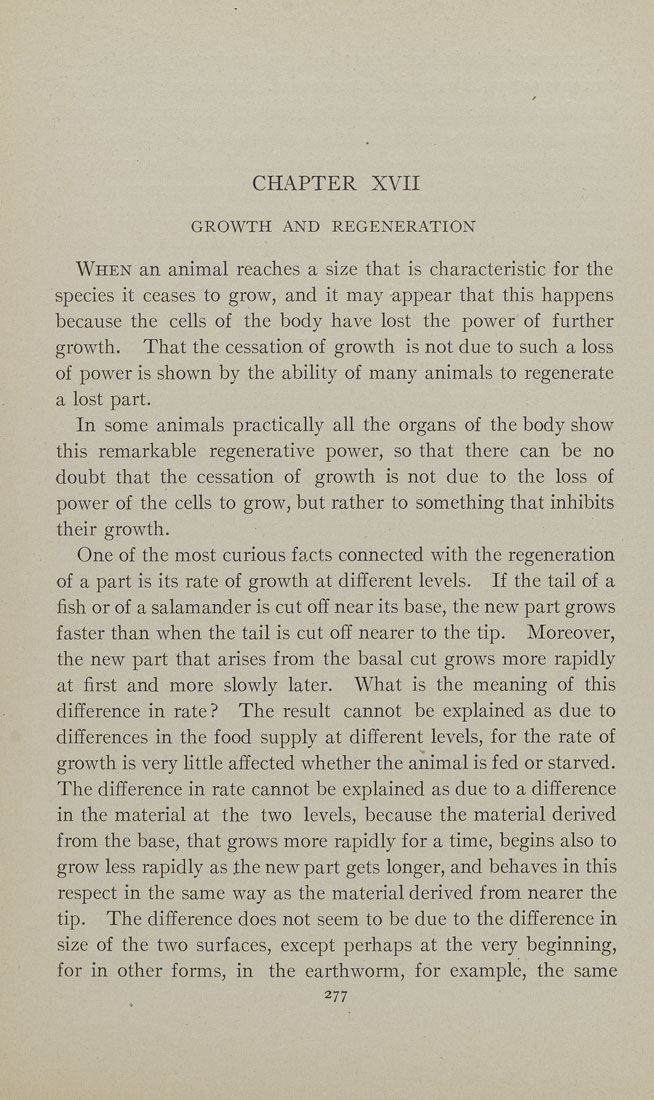CHAPTER XVII
GROWTH AND REGENERATION
When an animal reaches a size that is characteristic for the
species it ceases to grow, and it may appear that this happens
because the cells of the body have lost the power of further
growth. That the cessation of growth is not due to such a loss
of power is shown by the ability of many animals to regenerate
a lost part.
In some animals practically all the organs of the body show
this remarkable regenerative power, so that there can be no
doubt that the cessation of growth is not due to the loss of
power of the cells to grow, but rather to something that inhibits
their growth.
One of the most curious facts connected with the regeneration
of a part is its rate of growth at different levels. If the tail of a
fish or of a salamander is cut off near its base, the new part grows
faster than when the tail is cut off nearer to the tip. Moreover,
the new part that arises from the basal cut grows more rapidly
at first and more slowly later. What is the meaning of this
difference in rate? The result cannot be explained as due to
differences in the food supply at different levels, for the rate of
growth is very little affected whether the animal is fed or starved.
The difference in rate cannot be explained as due to a difference
in the material at the two levels, because the material derived
from the base, that grows more rapidly for a time, begins also to
grow less rapidly as the new part gets longer, and behaves in this
respect in the same way as the material derived from nearer the
tip. The difference does not seem to be due to the difference in
size of the two surfaces, except perhaps at the very beginning,
for in other forms, in the earthworm, for example, the same
277
|








